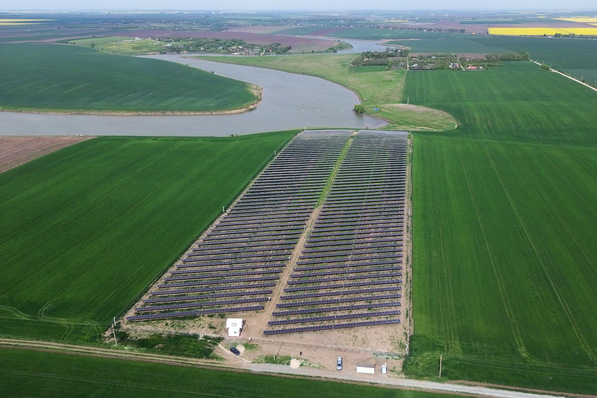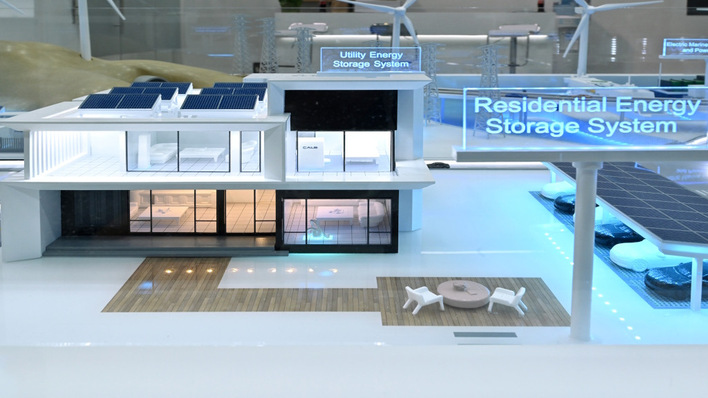Between 1965 and 2004, renewables accounted for less than one percent of primary energy consumption in Poland. In 2005 they cracked the one percent mark for the first time to reach a share of more than 12 percent in 2023. Electricity also made a breakthrough in 2005 with a 2.5 percent share of net electricity generation, culminating in a 26 percent share in 2023, consisting of photovoltaics (8.7 percent, wind power 14.6 percent), biomass (1.4 percent) and running water (1.2 percent). At the end of September 2024, the installed PV capacity in the country stood at 19.9 GW. In September 2024 alone, 13,040 new PV plants were installed with a total capacity of 363.53 MW. 32 percent of the installed capacity is accounted for by plants below 51-kilowatt peak, 23 percent by plants between 51- and 999-kilowatt peak. Plants above 1.000-kilowatt peak capacity account for 55 percent of the installed power in September.
A self-sufficient country
Every year, around 167 billion kilowatt hours of electricity are produced in Poland from different energy sources. In 2023, the electricity mix was composed as follows: hard coal 43%, lignite (20.8%), photovoltaics (8.7%), onshore wind (14.4%), natural gas (8.2%), oil (1.7%), biomass (1.4%), running water (1.2%), and coal gas (0.3%). Consumption of around 157 billion kilowatt-hours per year is around 7% below the kilowatt-hours produced in the country. Thus, Poland is self-sufficient in terms of electricity.
Also of interest: Ioannis Chatzichristofis: “a key prerequisite is the modernization of the Polish electricity grid”
No competition from nuclear energy - so far
Poland does not have a nuclear power plant connected to the grid, but it does have a unfinished building which has been abandoned. After the Chernobyl disaster and massive resistance, the construction of the first Polish nuclear power plant, "Zarnowiec," was stopped by a referendum in 1990. Since then, there have been repeated attempts to introduce nuclear energy in the country. The latest plan envisages a site very close to the old, ruined building with the grid connection cautiously planned for 2040. That is 15 years in which photovoltaics, electricity storage, other renewable energies and the electricity grid will also be expanded, systems that are proven to be economical, safe and manageable over their entire life cycle.
Solar and wind power are increasingly displacing coal power
While the share of renewables is increasing, at the same time the share of coal power is decreasing. In the years 2021 to 2023, the share of hard and lignite in Poland's net electricity generation has fallen from 76 percent to less than 64 percent. At the same time, the share of photovoltaics has increased from 2.9 to 8.7 percent. For onshore wind turbines, the share of net electricity generation has increased from 9.5 to 14.6 percent over the same period. The number of large PV installations in Poland has more than quintupled within five years, from 942 installed systems in June 2023 to 5410 installed systems in June 2024. The installed capacity of large systems has increased in the same period from 698 megawatts in June 2020 to 6,622 megawatts in June 2024. For prosumer systems, the pure expansion figures are particularly impressive, with almost 500,000 systems installed at the end of 2020 and over 1.4 million at the end of 2023.
Also of interest: Joachim Goldbeck: “Negative electricity prices are a bad fit with PPAs”
Commercial and open space PV is all the rage
The trend towards more high-performance photovoltaic systems is confirmed by many market players. While the number of small systems installed on private buildings depends heavily on government funding programs, in the industrial and commercial sectors the factors of economic efficiency, independence from electricity price fluctuations and securing a lower electricity price in the long term are crucial. A look at the electricity pricing policy explains the motivation for more and more business installations: unlike in Germany, for example, a kilowatt hour of electricity consumed privately in Poland costs according to the platform "Global PetrolPrices" significantly less (0.22 euros) than a kilowatt hour consumed commercially (0.39 euros). The trend is therefore self-explanatory. It can be assumed that, given the still large percentage of electricity generated by coal on the one hand and the great potential offered by many businesses and manufacturing companies with high energy requirements, the sales teams for PV systems will not run out of work, at least in the commercial sector.
Author: Manfred Gorgus
Also of interest: Menlo Electric: 1 GW of PV component deliveries in 2024 to date








